Harry’s Open Pit BBQ
This one’s about Harry’s Open Pit BBQ. Harry, whoever he was, had a small chain of barbecue places that cooked real meat over real wood. Their sauce was mediocre but that was okay because the ribs and chicken were so good nude that you didn’t need sauce. I used to go to the one on Crescent Heights, just south of Sunset, situated about where you now enter the parking garage for the big shopping complex that’s now there. It was a little rathole of a building with everything served fast food style. You ordered your ribs and/or chicken at a counter and they’d take your food right off the grill for you. Then you carried it into a little dining room with picnic table seats and a large sink, right in the midst of the tables, for the washing of rib-stained fingers.
That Harry’s always had a strong rock-and-roll connection due to the surrounding businesses and when it closed, its proprietors briefly moved its open pit and food service into a rock club across the street. As a result, a number of musicians did odes to Harry’s ribs on their albums of the period. Canned Heat, for instance, recorded a song called “Harry’s Open Pit Barbecue.” It’s about all that’s left of what was once the best place in L.A. to get ribs.
Pizza Prince
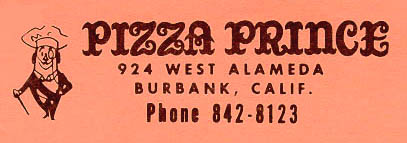
The best pizza I ever had in my life was at an unassuming little stand on La Cienega Boulevard, about five blocks south of Pico. In the late sixties/early seventies, Pizza Prince served an incredible pie. I worked for a while in that area and lunched on Pizza Prince pizza at least twice a week. And then I introduced the girl I was dating to their cuisine and suddenly, she didn’t want to eat anywhere else…which was jes’ fine with me. My friends and I were all heartbroken one day around 1973 when the building suddenly turned into something else run by someone else. (It went through a couple of identities and is now a taco stand.)
Then one day a few years later, I was leaving an appointment out in Burbank and turned onto an unfamiliar street only to find a familiar logo — Pizza Prince! Same lettering style and everything. What’s more, when I went inside the same guy who’d run the La Cienega stand was there kneading dough and he even recognized me. As he heated me some slices, he explained his old landlord had doubled the rent so he relocated, even taking along the same oven and most of the same kitchen gear. Sure enough…same wonderful pizza. I made a mental note to return there often and two weeks later, dragged a bunch of friends towards its doors, promising them pizza so fine it would spoil them for life. You probably see this coming but I didn’t: The place was closed. Out of business, apparently. As far as I know, it never reopened.
Bit O’Scotland
Over on Westwood Boulevard, between Olympic and Santa Monica Boulevard, you could once get the best fish and chips you ever had, served by cheery older women with (mostly) British accents. The entire menu was fish and chips, shrimp and chips, chicken and chips, some kind of ham and chips, plus various combination plates. I never had the ham but I think it was the only thing in the place that wasn’t fried, except maybe the clam chowder (red), salad, beverages and shortbread. This was all served in an an old house someone had converted into a restaurant that was way too small for the crowd. On weekends, the wait to dine could run upwards of an hour and for some reason, every time I found myself waiting for a table, the party ahead of me included James Coco.
After Bit O’ Scotland closed, the same family opened a restaurant over on Pico near Rancho Park. It’s called John O’ Groat’s and it’s open mainly for breakfast and lunch. But at lunchtime, you can order fish and chips made with the same wonderful recipe. Alas, they don’t have shrimp, scallops or cheery older women with British accents.
The Captain’s Table
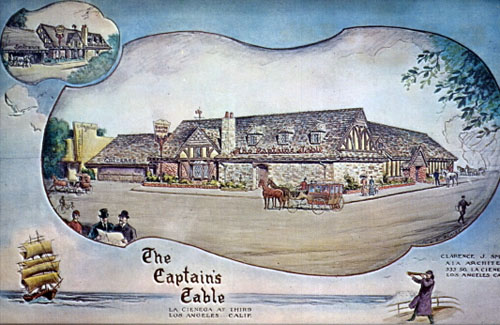
Located at the end of Restaurant Row — on La Cienega near 3rd Street — The Captain’s Table had a glorious history as one of the city’s best places to eat fish. Alas, by the time I dined there in the early seventies, it had become a rather mediocre and overpriced establishment that sold you a lobster with the same grandeur and price tag of Tiffany’s delivering your new diamond tiara. The decor had that “men’s club” feel with a maritime flavor and chairs that had uneven legs so they made you seasick. I don’t think that was deliberate.
Apparently, competition did the place in. It was not far from the Smith Brothers’ Fish Shanty, which was a much better seafood restaurant, and it was a few blocks from Alan Hale’s Lobster Barrel. Some people apparently got confused and went to The Captain’s Table thinking they were going to get to meet the Skipper. The last year or so of its existence, I lived one block from the place and never ventured in. My friends and I would walk right past it to get to the Fish Shanty.
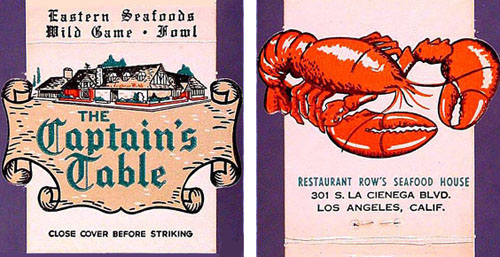
The main thing I recall about it is that at some point in the mid-seventies, a group of local Star Trek fans decided they wanted to meet William Shatner and take him to dinner. The Captain’s Table seemed like the appropriate place to sup with Captain Kirk so they all pledged the necessary funds and bombarded Shatner — at every conceivable address — with invites to dine there with them. For months, they could get no response and the invitations grew ever more militant. I knew one of the Trekkers involved in the plan and she was beginning to lose her love for Mr. Shatner due to him not extending them even the courtesy of a reply.
Finally, as the story was told to me, some publicist for the star called the ringleader and said, in effect, “Knock it off with all these invitations or we’ll call the police and report you all as stalkers. Shatner’s not going to dine with you anywhere and if he did, he especially wouldn’t eat at The Captain’s Table. He hates that restaurant and people are always trying to drag him to it.” Two days after I heard this, I noticed The Captain’s Table was out of business and the building was being sprayed with psychedelic colors, long after they were fashionable, and transformed into a discotheque, long after anyone was going to them. It was like the place was so ashamed at being rejected by William Shatner that it had turned to drugs.
Scandia
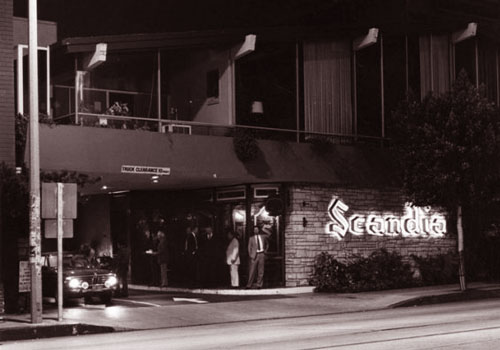
One of the fanciest restaurants in Los Angeles was located at 9040 Sunset Boulevard, just west of Doheny. A man named Ken Hansen originally opened it across the street in 1947. Ten years later, he moved into its more famous location and began serving Scandinavian cuisine to a rich and famous clientele. His sister-in-law, Teddy Hansen, served as the hostess in charge of greeting and seating the beautiful people and she knew everybody.
In the early seventies, the Hansens sold Scandia to magazine publisher Bob Petersen, he of the automotive magazines. By then, the character of Sunset Boulevard was beginning to change. Other businesses in that area, including the Roxy nightclub and the Rainbow Bar and Grill, attracted a younger, rowdier crowd. Every night, police were busting drug dealers within yards of Scandia, and it did a lot to drive Scandia’s older, wealthy clientele to other, newer eateries. The place finally closed in 1989.
Kenny Rogers Roasters
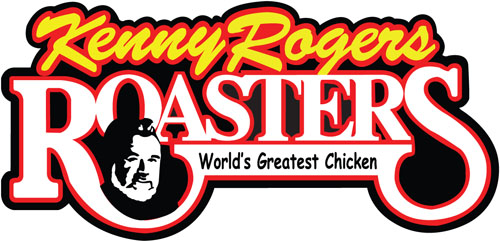
In 1991, singer Kenny Rogers got together with a gentleman named John Y. Brown Jr., who was one of the main builders of the KFC (Kentucky Fried Chicken) chain, and they launched a chain of “healthier” fast food restaurants. The premise was that America was turning away from fried chicken and would opt for Kenny’s wood-fired rotisserie birds and fresh, unfried side dishes. For a time, they did.
The first one of these I went to was in Las Vegas, secreted away in a failing theme park that had been built behind the MGM Grand Hotel. The park was near-deserted (and would soon be torn down) and when I wandered into the Kenny Rogers Roasters there, I think I was their first customer of the day…and it was 3:00.
I wish you’d seen that place because it was excessive, even for something built inside an amusement park in Las Vegas. It was like the temple for a religion that worshipped Kenny Rogers as Christ figure. There were posters of him and photos and blow-ups of newspaper articles and gold records and the Muzak played the same half-dozen Kenny Rogers records over and over and over. The lady at the counter told me she’d worked there for three weeks and already yearned to never hear “The Gambler” again for the rest of her life.
As it happened though, the food was pretty good. As new, less ostentatious Kenny Rogers outlets appeared nearer to my home in L.A., I began patronizing them and I usually enjoyed the chicken. Enough people did that the chain soon had 350 restaurants around the world. The one I usually went to was on Wilshire Boulevard, a few blocks east of Bundy. (When it went out of business, a succession of other fast food places inhabited the building. Last time I looked, it was a laundromat.)
Kenny Rogers Roasters were apparently on the downslide by 1998 when the company that owns Nathan’s Famous acquired the chain. Many Kenny Rogers stores became combo shops, also serving the Nathan’s hot dog menu, which caused the Roasters side to lose much of its identity. All of these closed. At last report, there was only one Kenny Rogers Roasters remaining in the U.S. — it’s in Ontario, California — though some items from its menu still pop up at other fast food restaurants owned by the Nathan’s people. The chain continues to flourish in Asia and the Philippines.
One factor which may have contributed a little to their demise was an appearance Mr. Rogers made in 1997 on Late Night With Conan O’Brien. He agreed to participate in a blind taste test, pitting chicken from one of his eateries against chicken from the NBC Commissary. To the delight of the audience — but perhaps not his shareholders — The Gambler made a bad bet and picked wrong. But then the whole enterprise was a losing wager in this country, I guess.
Fish Shanty
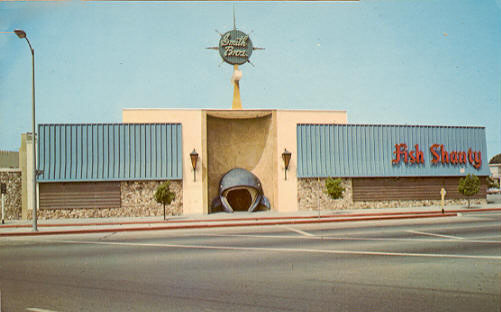
Located at the messy intersection of La Cienega Boulevard, San Vicente Boulevard and Burton Way, the Smith Bros. Fish Shanty was known to Los Angeles residents as “that place where you walk in through the whale’s mouth.” If you did, you got pretty good seafood served to you by friendly waitresses who seemed to have been there forever. You could always take their word on what was good and fresh that day.
One was always quietly warning me away from a side dish option they had called “Warm Potato Salad with Bacon.” It had once been a specialty of the house but, she said, the current chefs didn’t make it as well as their predecessors. Everything else, she said, was great and she seemed to be right about that. The fried shrimp and the abalone were especially grand. We miss the cuisine and we miss entering via the whale’s jaws and feeling, just for the moment, like Pinocchio.
GAF&BC
We’re talking here about a small chain called The Great American Food & Beverage Company. There were a couple of these around Los Angeles in the early seventies…one in Westwood, one in Santa Monica and maybe others. The two things I remember about them are that the portions were huge to the point of being impractical — you’d haul home about 80% of your entree and live off it for days — and that the servers would take turns performing with a small live band. Once, I ordered a hamburger and they brought me this footstool-sized mass of meat and bun surrounded by enough fries to stock a McDonald’s for a month.
But I was sans ketchup, and when I turned to ask our waiter for some, I found him up on a platform, performing what turned out to be the world’s longest version of “Rubberband Man.” I think he did about ninety choruses while I failed to flag down any other employee and my burger cooled to tepid. Finally, long after I’d given up any chance of having the hamburger the way I liked it and had begun to eat it dry, the waiter noted the omission, hopped down from stage and fetched me a bottle of Heinz while still performing “Rubberband Man.” It was one of those moments when you almost feel like you ought to tip.
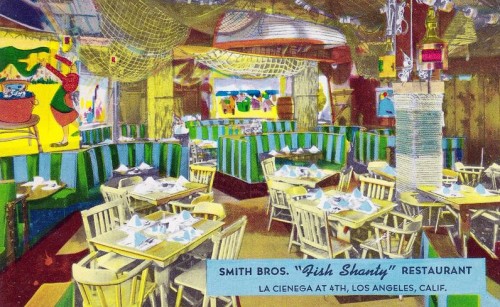






Recent Comments